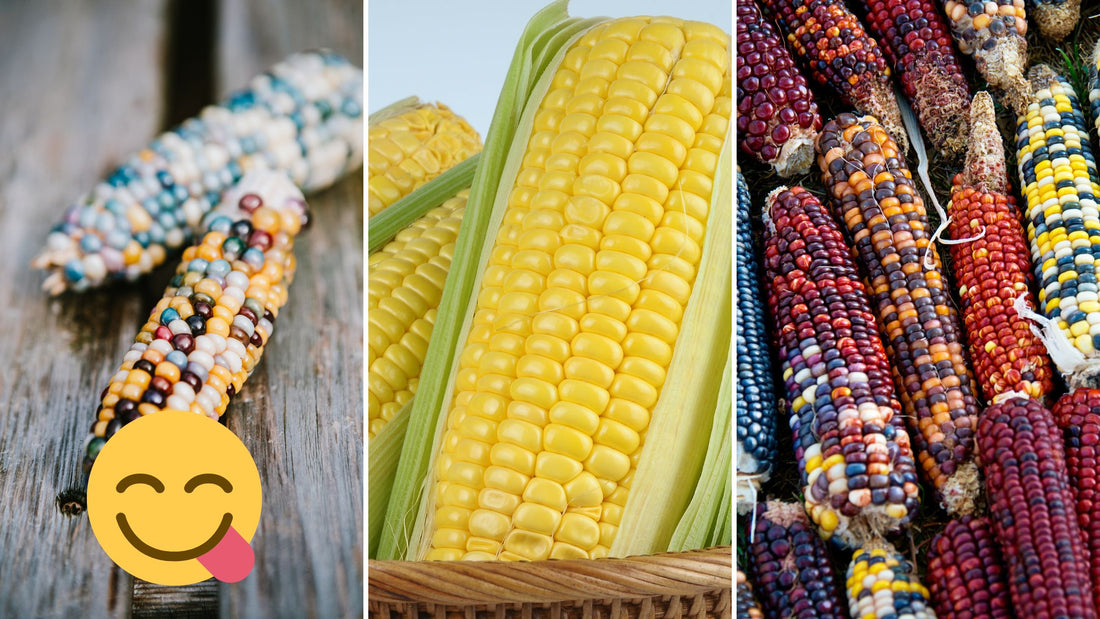Corn, a versatile and delicious grain, boasts a diverse range of varieties, each with its own unique harvesting methods and ideal times. Whether you're cultivating sweet corn for summer barbecues, ornamental corn for autumn decorations, or flour corn for baking, understanding the subtle signs of ripeness is key to reaping a successful harvest.
Sweet Corn: The Star of the Summer BBQ
- Ripeness cues: The key to harvesting sweet corn at its peak flavour lies in observing the top of the cob. Look for the silky strands, called silks, to turn brown and dry. Peel back a section of the husk and gently pierce a kernel with your fingernail. If a milky white liquid emerges, the corn is ready for picking! If the liquid is clear, wait a few days and recheck the kernels – patience is crucial for the ultimate sweetness.
- Harvesting: Early mornings are the prime time to harvest sweet corn, as the cobs retain their cool temperature and peak flavour. Grasp the ear firmly near the base and twist it downwards, applying gentle pressure to pull it away from the stalk. The ear should come off easily with minimal effort. Now, remove the husks and silks, and get ready to savour the fresh, sweet reward of your labour!
Ornamental Corn: A Harvest for the Eyes
- Ripeness cues: Unlike its sweet counterpart, ornamental corn like Glass Gem isn't grown for its culinary qualities but for its vibrant colours and unique textures, adding a touch of autumnal charm to homes and gardens. Therefore, the focus here shifts from taste to visual appeal. Aim for fully mature and dried cobs, where the kernels have hardened considerably, and the husks have begun to turn brown.
- Harvesting: Once the husks have completely dried the corn is ready to harvest. Simply twist or cut the cobs from the stalk, leaving a few inches of stem for easier handling. To ensure long-lasting decorations, allow the cobs to dry completely in a well-ventilated area out of direct sunlight. This will preserve their vibrant colours and unique shapes.
Flour Corn: From Field to Flour
- Ripeness cues: Like ornamental corn, flour corn like Oaxacan Green, Blue Hopi, Red Aztek and Multi Coloured Aztek are harvested for their dried kernels, which are eventually ground into flour. Here, the focus is on achieving complete dryness and a distinct change in the kernel's texture. Look for completely dry husks and kernels that are hard and dented, not the plump and juicy kernels characteristic of sweet corn.
- Harvesting: Once the kernels are dry and hard, signifying they're ready for grinding, cut or snap the entire stalk close to the ground. Leaving the cobs in their husks provides additional protection during the drying process. Hang the stalks in a well-ventilated area for several weeks to cure. After curing, remove the kernels by hand or use a corn sheller to expedite the process.
General Tips for Corn Harvest Success:
- Time is of the essence: Harvest your corn varieties as soon as they reach their peak ripeness to prevent overripe kernels and a decline in quality.
- Sharp tools are your friend: Use a sharp knife or pruners when cutting stalks to ensure clean cuts and prevent damage to surrounding plants.
- Storing your bounty: Fresh sweet corn is best enjoyed soon after harvest. Store it in the refrigerator for up to a week, or blanch and freeze it for longer storage. Dried flour corn kernels, on the other hand, can be stored in airtight containers in a cool, dry place for several months, ready to be transformed into delicious homemade cornbread or other delectable treats.
By following these comprehensive guidelines, you can ensure a successful harvest of all your corn varieties allowing you to enjoy their unique flavours, beauty, and versatility for months to come!

